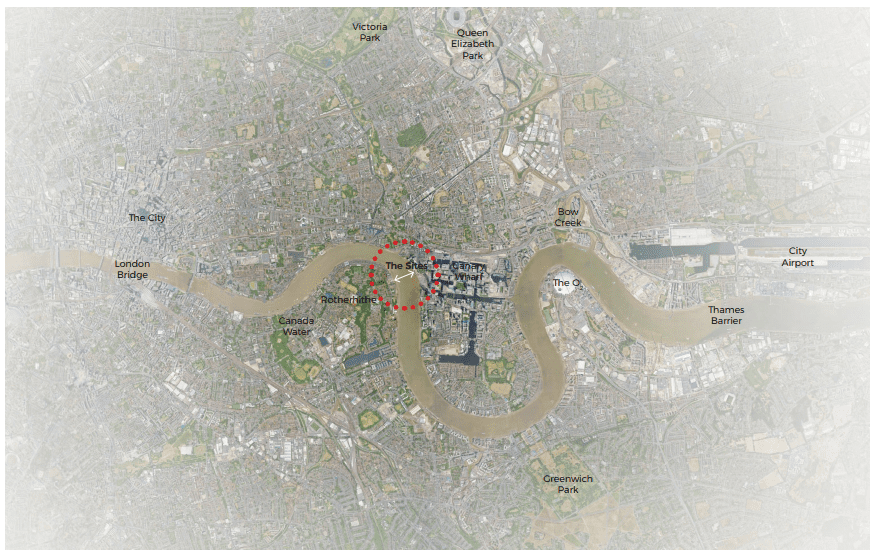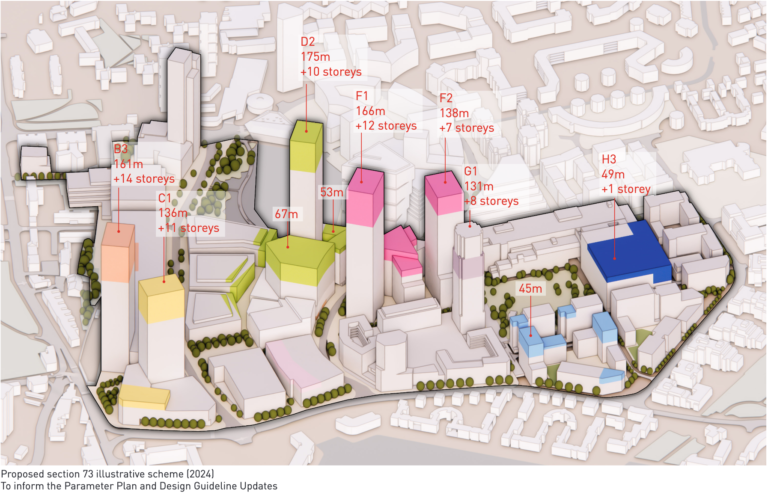
Proposals submitted on behalf of the Cross River Zero Emission Ferry CMDC partnership, led by Thames Clippers in support of a full planning application to the London Borough of Southwark for the proposed demolition and replacement of the existing pier alongside the refurbishment of the existing landside peninsula and the installation of proposed lightweight over-dock walkway, to facilitate a new fully accessible electric cross-river ferry service from Rotherhithe Pier to Canary Wharf Pier.
This new electric ferry service will replace the existing diesel-powered service currently operating and will form the first of its kind in the UK.
The new electric ferry will upgrade an existing ferry crossing from Canary Wharf Pier to the Doubletree Docklands Pier.
This proposal assists a project submitted as part of Round 3 of the Clean Maritime Demonstration Competition
(CMDC 3). This competition was launched to deliver a suite of demonstrator projects to be launched by the UK
Shipping Office for Reducing Emissions (UK SHORE).
UK SHORE aims to transform the UK into a global leader in the design and manufacturing of clean maritime technology.

The CMDC 3 is a Department for Transport (DfT) research and development scheme managed through Innovate
The UK and as such this proposal is partly funded by DfT and the Green Maritime Fund.
The Scheme therefore is subject to grant funding. To ensure the scheme qualifies for this funding, the scheme must be delivered and in operation by the end of February 2025.
The development consortium is formed of Thames Clippers (vessel operations), Wight Shipyard Company
(vessel/berth construction and systems integration), Beckett Rankine (civil engineering and infrastructure), Aqua
Super-power (shore-based charging and grid connection) and supporting sub-contractors.
If the scheme materialises, the capacity would increase the capacity of the current ferry service (100 persons and 5 cycles) to 150 passengers with enhanced capability for carriage of cycles (100 cycles) and faster turn rounds to maintain the existing schedule running at regular intervals from 6:00 am and 11:30 pm.
End embarkation/disembarkation in combination with semi-autonomous mooring is proposed to reduce turnaround and overall journey time, improving the passenger experience.

The replacement ferry will be purely electric combined with a renewable electricity supply and provide the opportunity for a truly zero-emission waterborne passenger transit system.
The opportunity to optimise energy usage by management infrastructure enhances existing electric vessel technology. The proposals will remove a conventional diesel-powered vessel providing a significant reduction in emissions in the operating area.
The proposals will also provide proof of concept with evidence it is capable of deployment on other
routes both within the UK and overseas.
The overall concept will enable new short cross-river passenger ferry operations to be deployed easily with minimal shoreside infrastructure development beyond power availability.
The new vessels will be electric ferries with a 3-minute docking operation and a 3-minute journey
time.
These will operate to the same RB4 timetable as is currently in place, but there is allowance within
the piers to facilitate an additional vessel should passenger numbers warrant this.



